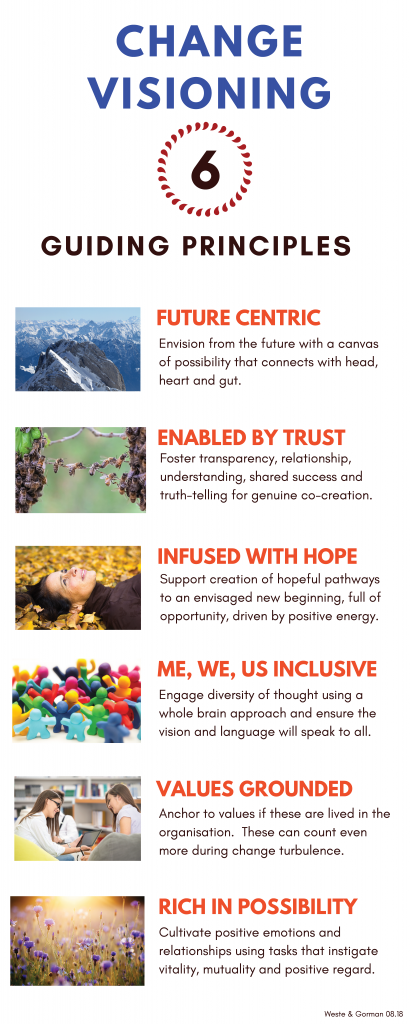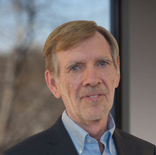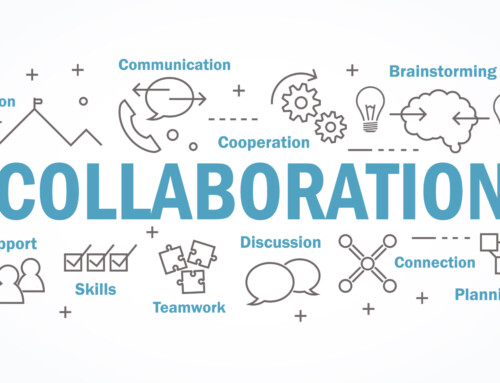Visioning, when done well, is at the heart of transformational change. In this article we make the case and lay the groundwork for successful visioning. Our next article addresses the visioning  process.
process.
Vision from the future.
Visioning from the present to the future tends to keep us in our “rational” brains, limiting how much we are stretching boundaries or “thinking outside the box.” Visioning from the future opens us to connect not only with our head (rational) brain, but also with our heart and gut brains. Major change requires not just a mental letting go, but an emotional letting go as well. It requires endings, and engaging with the fact that the future state will necessitate loss. It also offers the promise of hope through a new beginning. Visioning from the future is a shift of the dial, from avoidance and negativity bias (natural tendencies) to approach motivation and fostering positive emotions such as hope and optimism for the future. A vision from the future helps to touch that in us, beginning the process of reprogramming neural networks and muscle memory. Visioning defines an end state; allows people to perceive of pathways to get there; and provides motivation to do so, regardless of the challenges along the way. (Principles: Future Centric; Infused with Hope; Rich in Possibility)
Involve the influencers.
Regardless of your organizational structure, there is a network of people that others will look to for their thoughts, and even guidance, regarding the change. Organizational network analysis can help you to identify who these influencers are; you will find them throughout the organization at many levels and in many roles. By engaging them in the visioning process, you are helping to create an early—and powerful—network of commitment and helping to reduce the overall resistance that your change will generate. (Principles: Enabled by Trust; Me, We, Us Inclusive)
Ensure diversity.
The thinking style that is best suited to visioning is future focused – where people’s thinking preferences are described as metaphoric, integrative, holistic, visual, synthesizing, conceptual, imaginative, experimental and creative. Those whose thinking styles naturally tend towards left brain dominance – rational, practical, facts and structure – find it very difficult to naturally flex into that space. A whole brain approach is critical to visioning, allowing the various thinkers/influencers to contribute to the development of the future state and then advocate for and support it with their constituent groups. (Principles: Infused with Hope; Me, We, Us Inclusive)
Vision in an environment of trust.
Trust is essential to co-creation. In the absence of trust the best that you can hope for are ideas of incremental change, nodding heads, and disengagement. Judith E. Glaser, the author of Conversational Intelligence, identifies five elements as the foundation of trust: transparency, relationship, understanding, shared success, and truth-telling. It is vital that the facilitators be trusted, and that everything possible be done to create an environment of trust for those who are visioning. Clear ground rules, including those that support Glaser’s foundational elements of trust, should be mutually agreed to by those involved and strictly adhered to. (Principle: Enabled by Trust)
Vision in the language of the people.
Create a story from the future, not press releases and fact sheets. “We did it!” is a lot more powerful than “In five years when we achieve 33.4% market share…” Story telling has been the primary tool for passing down culture, and for shifting traditions, for virtually as long as humans have been communal. Successful visions speak to the head, heart, and gut. They speak to the emotions. They speak clearly to all of those inside and outside the organization who will be touched by the change. They speak words. But they also may speak in music, or visual representation. They speak in the language of the people they touch. They speak of the journey, the obstacles overcome, and its successful conclusion. The story should be inclusive of “me, we, and us.” (Principles: Future Centric; Infused with Hope; Me, We, Us Inclusive)
Identify the anchors.
Anchors hold things in place. Sea anchors keep ships facing into the turbulence. When visioning, it is too early to know what anchors will have to be cut loose in order for the organization to move into the future. Some anchors represent what is not changing, so assume even greater importance in times of upheaval. It is critical that you identify the sea anchors that will keep people facing into the turbulence during the journey. Sea anchors must be real, and meaningful. For example, in some companies the mission is embedded in how people think and act; in others, the mission is no more than words on a wall. In the former case, ensure that the vision calls out the continuity of the mission if it is continuing. Values can be sea anchors if they are lived and have resonance in the organization. Sea anchors should be clearly articulated in the vision story. (Principles: Values Grounded; Me, We, Us Inclusive)

Brian Gorman is Managing Editor of Change Management Review and a transformation coach. His decades-long career has been dedicated to the practice and study of change management and the psychology of people going through change. Brian has recently contributed a chapter, “The Hero and the Sherpa” to the online publication of The Handbook of Personal and Organizational Transformation.

Julie Weste is a dynamic change leader who has facilitated individual and organisational transitions for over twenty five years. She is distinguished by her flair and character strengths of bravery, creativity and zest as she supports meaningful and memorable new beginnings in diverse workscapes. Having already attained significant change credentials, Julie is currently evolving her change practice through her studies in Applied Positive Psychology.




